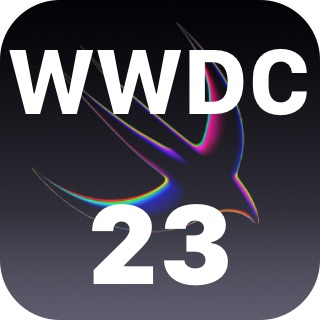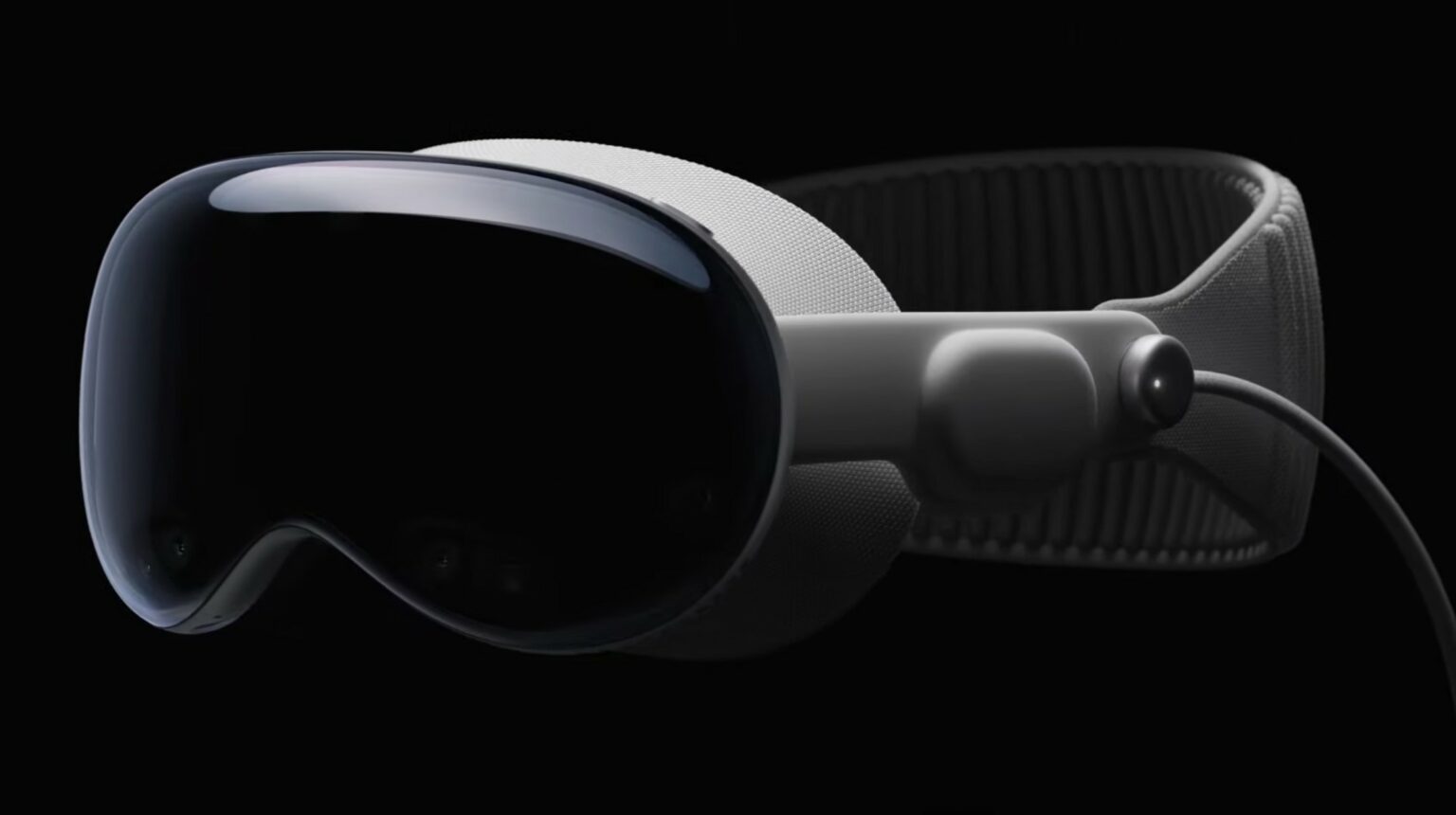
First impressions of the Vision Pro headset make it sound like Apple absolutely nailed both the industrial design and the overall “experience” of wearing a mixed-reality headset.
Apple didn’t let most reporters go hands-on (or rather “heads-on”) with the new device following the Vision Pro’s unveiling at Monday’s WWDC23 keynote. However, the company’s handlers let some members of the media into a private area to gawk at the Vision Pro — and a handful of people actually got to strap one on.
The very first glimpses reveal hardware that looks far better than the competition, paired with a compelling visual experience, and triggers only a few negative reactions.
Apple Vision Pro first looks
The headset, which Apple says will launch in 2024 and with a $3,499 price tag, represents the company’s first foray into what it calls “spatial computing.” The Vision Pro looks similar to devices like the Meta Quest 3, but with features — like a front-facing screen that can show the wearer’s face — that set it apart.
People on the ground in Cupertino seemed pretty blown away by the Vision Pro’s look, even if they didn’t get a chance to actually see (or hear) what it can do.
“What does the Apple Vision Pro look like? Imagine a pair of ski goggles. The fanciest, most sci-fi ski goggles you’ve ever seen,” wrote The Verge. “Based on the little bit we’ve seen, it’s a dramatically better-looking device than any other AR or VR headset.”
YouTuber Dave Lee said the Vision Pro “has some next level build quality” and also called out the headset’s speakers, which “look interesting.”
Apple Vision Pro has some next level build quality. Those speakers look interesting too pic.twitter.com/S2bLjEgRBq
— Dave Lee (@Dave2D) June 5, 2023
How Vision Pro compares to the competition
amazing! 简直是个艺术品! Jony Ive的风格还是在的 pic.twitter.com/Bc0IX9adkx
— 有没有搞措 (@L0vetodream) June 5, 2023
As is its way, Apple arrived fashionably late to the AR/VR party. With Vision Pro, the company hopes to redefine — and then quickly dominate — the product category.
So, how does it compare to the competition?
“It looks like yet another headset — almost like a souped up version of the Meta Quest Pro,” wrote Engadget. “But even with just a short glance, it’s clear that the Vision Pro is pure Apple: It’s like seeing the iPod compared to the clunky MP3 players of its era, or the iPhone next to a BlackBerry.”
The “springy side bands and ribbed rear headband look … suitably high-end,” the publication continued, adding that Vision Pro “has the wow factor you’d expect from a prestige Apple product.”
Thumb for size comparison #wwdc pic.twitter.com/iSqQlb3KbS
— Geoffrey A. Fowler (@geoffreyfowler) June 5, 2023
So, what’s it like to wear Vision Pro?
The lucky few who got to actually try on the Vision Pro — not just look at a headset on a stick — reported some pretty incredible experiences.
“Apple Vision Pro resolution was the best I’ve ever experienced,” wrote Ben Bajarin, CEO and principal analyst at Creative Strategies, on Twitter. “It definitely nailed the promise of immersion we have all believed would come someday. But the quality of the pass-through was next level. No latency, extremely high quality, and it will only get better.”
He added that many aspects of the Apple headset need to be experienced to be understood.
“It is really hard to put into words, but one of those was 3D capture of image and video,” he wrote. “It was wild reliving a high-resolution 3d video of a moment/memory.”
Excellent video quality and an intuitive interface
CNET reporter Scott Stein, who wears glasses and thus needed some of the Zeiss custom inserts to correct his vision, called his experience with the Vision Pro “amazing.”
“I did my demos seated, mostly, and found myself surprised from the start,” he wrote. “The passthrough video camera quality of this headset is good. Really, really good. Not as good as my own vision, but good enough that I could see the room well, see people in it with me, see my watch notifications easily on my wrist. The only headset that’s done this is the Varjo XR-3, and Apple’s display and cameras may rival that one.”
Stein also described the Vision Pro’s user interface:
From there, the interface was surprisingly fluid. Looking at icons or interface options slightly enlarges them, or changes their boldness. Tapping with my fingers while looking at something opens an app up.
I’ve used tons of hand tracking technology on headsets like the Hololens 2 and Meta Quest 2 and Pro, and usually there’s a lot of hand motion. Here, I could be really lazy. I pinched to open icons even as my hand was resting in my lap, and it worked.
Scrolling involves pinching and pulling with my fingers, again pretty easy to do. I resized windows by moving my hand to throw a window across the room or pin it closer to me. I opened multiple apps at once, including Safari, Messages, and Photos. It was easy enough to scroll around, although sometimes my eye tracking needed a bit of extra concentration to pull off.
Controlling the device with your eyes
YouTuber Marques Brownlee singled out the Vision Pro’s eye tracking as the most impressive thing about the device. He said it made the headset feel “telepathic.”
“The eye tracking in this headset, as it looks at your eyes and keeps track of where your eyes move around, is the closest thing that I’ve experienced to, like, magic,” Brownlee said. “I normally don’t call tech things sort of magical or surreal like this, but this was — even for a pre release product — kind of unbelievable how well it does. Anytime you move your eyes around the UI, it would immediately highlight and select exactly what you’re looking, at no matter how small the target was or what you’re looking at. And then when you want to select something, all you do is take your fingers like this and just touch them together. That’s how you click. So you look at something — click. Look at something — click.”
9to5Mac’s Chance Miller said there’s a bit of a learning curve, but after 30 minutes using Vision Pro, the headset seemed comfortable.
“visionOS relies entirely on your eyes, hands, and voice for navigation,” Miller wrote. “I didn’t get to try out any of the voice control features, but the eye and hand control gestures were really impressive. A simple tap of your fingers allows you to select an object. You can zoom in by tapping and pinching just like you would on an iPhone, and you can scroll by flicking your wrist. An open-ended flick of your wrist will activate inertia scrolling just like on iPhone, iPad, and Mac.”
Amazing 3D visuals
CNET’s Stein also praised the Vision Pro’s 3D visuals.
“All the images looked really crisp, and a panoramic photo that spread around me looked almost like it was a window on a landscape that extended just beyond the room I was in,” Stein wrote. “Apple has volumetric 3D landscapes on the Vision Pro that are immersive backgrounds like 3D wallpaper, but looking at one really shows off how nice that Micro OLED display looks. A lake looked like it was rolling up to a rocky shore that ended right where the real coffee table in front of me was.”
And he went absolutely gaga over a demo of Avatar: The Way of Water, saying the scenes shown in his demo “sent little chills through me.”
“It was vivid,” he wrote. “This felt like a movie experience. I don’t feel that way in other VR headsets.”
FaceTime call and the ‘ick’ factor
Brian X. Chen, a reporter with The New York Times, wrote about using the Vision Pro’s meditation app, but said it couldn’t prepare him for a FaceTime call using Apple’s headset. He described the experience like this:
The Apple employee in the video call was using a “persona,” an animated 3-D avatar of herself that the headset created using a scan of her face. Apple portrays videoconferencing through the personas as a more intimate way for people to communicate and even collaborate in virtual space.
The Apple employee’s facial expressions looked lifelike, and her mouth movements synchronized with her speech. But because of how her avatar was digitally rendered, with the uniform texture of her face and the lack of shadows, I could tell it was fake. It resembled a video hologram I had seen in sci-fi movies like “Minority Report.”
In the FaceTime session, the Apple employee and I were supposed to collaborate on making a 3-D model in an app called Freeform. But I stared at it blankly, thinking about what I was seeing. After three years of my being mostly isolated during the pandemic, Apple wanted me to engage with what was essentially a deepfake video of a real person. I could feel myself shutting down. My “ick” sensation was probably what technologists have long described as uncanny valley, a feeling of unease when a human sees a machine creation that looks too human.
A technological feat? Yes. A feature I would want to use with others every day? Probably not anytime soon.
Vision Pro’s front-facing display
In Apple’s well-crafted Vision Pro demo reel, perhaps the most intriguing feature is the front-facing display that reveals the wearer’s facial expressions. Like every other aspect of the Vision Pro experience — which Apple calls “magical” — that part was not on display. (The headset demo units sat on sticks instead of being strapped onto heads, remember?)
So all that was visible was the front-facing display’s “immersive” state, which is what other people in the room will see when the wearer is watching a movie or otherwise engaged in virtual reality.
“The Vision Pro’s front-facing display was gently pulsing with light, which will be the indication that someone is in the headset but can’t see out; we weren’t able to see the other view, in which the wearer’s eyes are projected through that front screen,” wrote The Verge. “That view will either be innovative or horrifying. We’ll see.”


